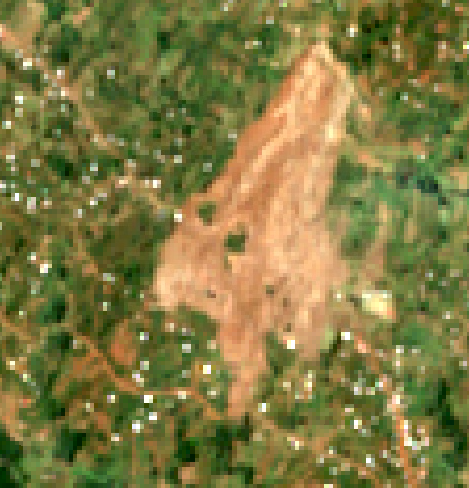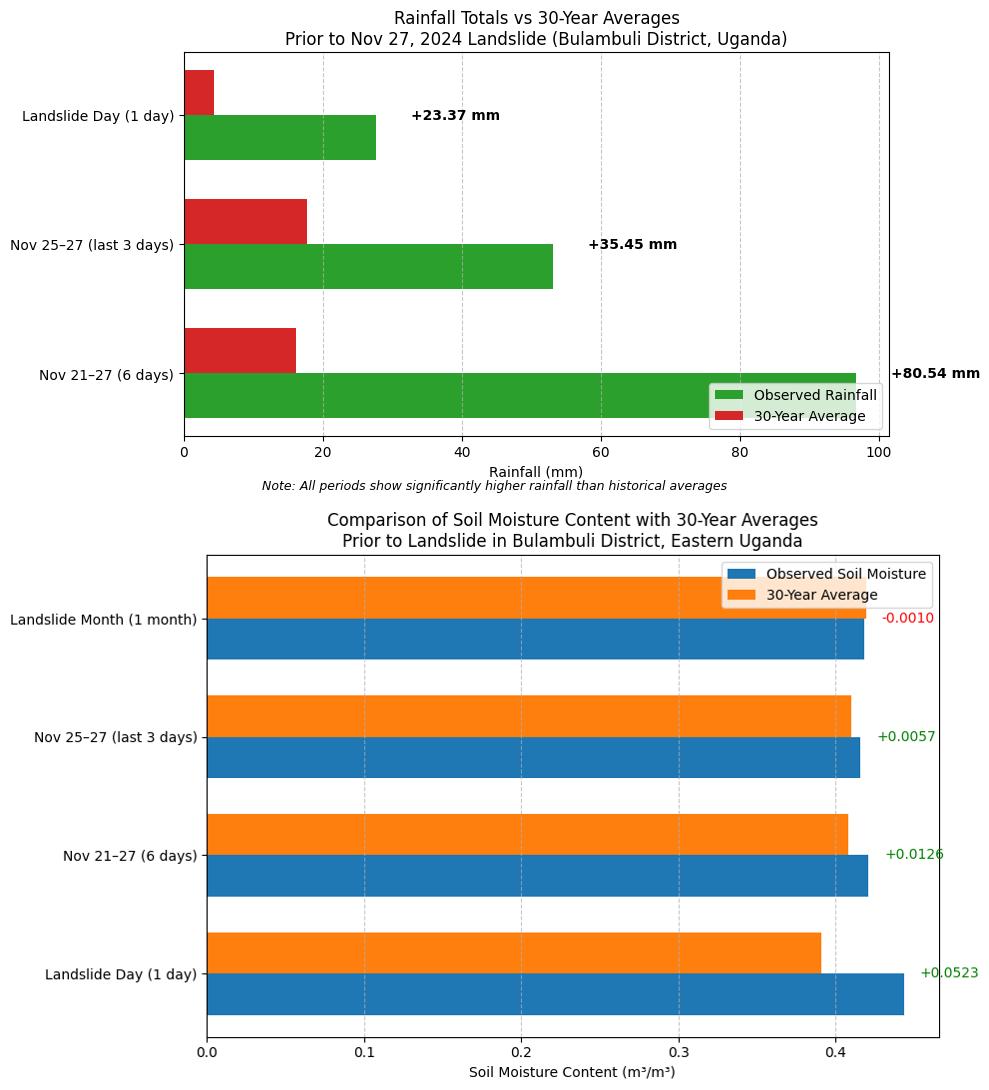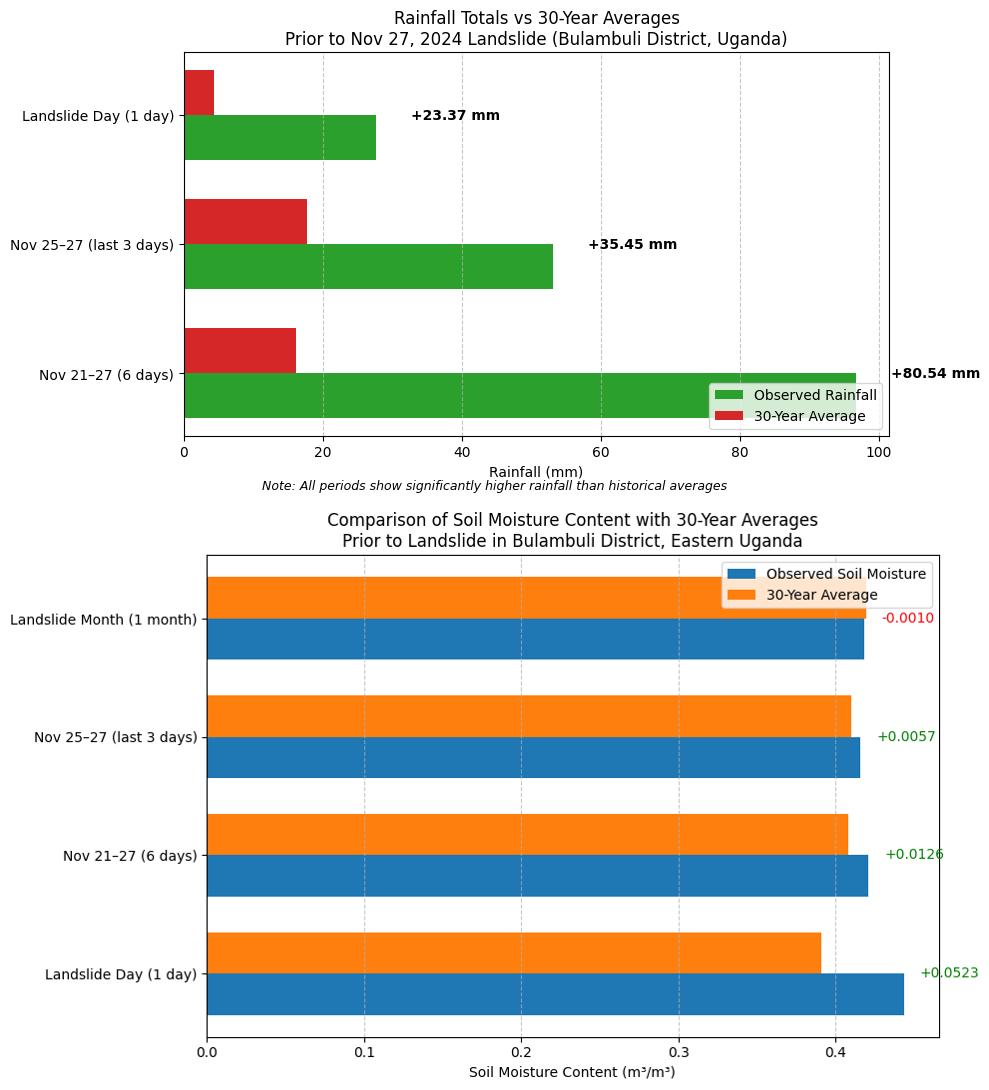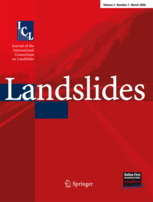Bulambuli Landslide
LCI : UGN2711241900| Main Information | |
| Landslide Name | : Bulambuli Landslide |
| Latitude | : 1:12:47.88 N |
| Longitude | : 34:21:59.4 E |
| Location | |
| City / District | : Bulambuli |
| Province | : Eastern Region |
| Country | : Uganda |
| Reporter | |
| Reporter 1 | : Mohammed Abdulahi |
| Reporter 2 | : Pascal Egli |
| Landslide Type | |
| Material | : Complex |
| Movement | : Flow |
| Velocity (mm/sec) | : Very Rapid |
| Depth (m) | : Shallow |
| Slope (degree) | : Very steep |
| Volume (m³) | : Large |
| Date of Occurence | |
| Date of Occurence | : Nov 27, 2024 |
| Other Information | |
| Land Use |
Source area : Farming, Pasture Run-out/deposition area : Forest, Farming, Human settlement, Road |
| Other Activity | : Active in the past |
| Triggering Factor | : Human activity and rainfall |
| Death(s) & Missing | : 55 and 95 |
| Houses and other structural damage | : 150+ houses and roads |
| Photo of landslide | :  |
| Google earth kmz file | : Bulambuli Landslide.kmz |
| Plan of landslide | : 1.png) |
| Cross section of landslide | :  |
| Reference (paper/report) | : 1. https://en.wikipedia.org/wiki/2024_Ugandan_landslides 2. https://go.ifrc.org/field-reports/17397 |
| Testing graph | :  |
| Monitoring graph | :  |
| Video of moving landslides including 3D simulation | : - |
| Description | : |
The Bulambuli landslide occurred on the evening of 27 November 2024, between 7:00 and 9:00 PM, in Masugu village, Buluganya Sub-County, Bulambuli District, Eastern Uganda, at coordinates 1°12′47.88″N and 34°21′59.4″E. It was triggered by heavy and continuous rainfall that lasted from 11:00 AM to 7:00 PM. The saturated soil eventually lost stability, leading to a sudden slope failure. Human activities, such as land use changes, may have increased the area’s vulnerability. This landslide was a fast-moving flow-type landslide involving a mix of soil, rocks, and debris. The movement started in upland areas that were farmed, and grazed, and descended into residential zones, roads, and farmlands, leaving destruction along its path. Although the landslide was relatively shallow, its speed, volume, and the steepness of the terrain made it particularly destructive. This district has a known history of landslides, highlighting its ongoing exposure to such hazards. The impact on both people and infrastructure was severe. Approximately 150 people died, and 95 more were still missing by early December. Over 30,000 individuals were affected, with around 2,023 households, about 12,138 people, displaced. More than 150 homes were destroyed, and critical roads, farmland, livestock, and community infrastructure were buried under debris. Beyond the physical damage, the disaster left deep emotional and psychological wounds. Many survivors suffered from trauma, grief, and feelings of isolation especially those who lost multiple family members. One person reported losing eleven relatives. These experiences show the urgent need for comprehensive support after the disaster, including mental health care and long-term community recovery services. Source: Abdulahi, M., Egli, P., Nakakaawa-Jjunju, C., Opach, T., Bamutez, Y., Nakileza, B., & Naboth, M. (in preparation). Landslides triggered by the November 27, 2024, heavy rainfall in the Bulambuli District, Eastern Region, Uganda [Unpublished manuscript]. |
|




